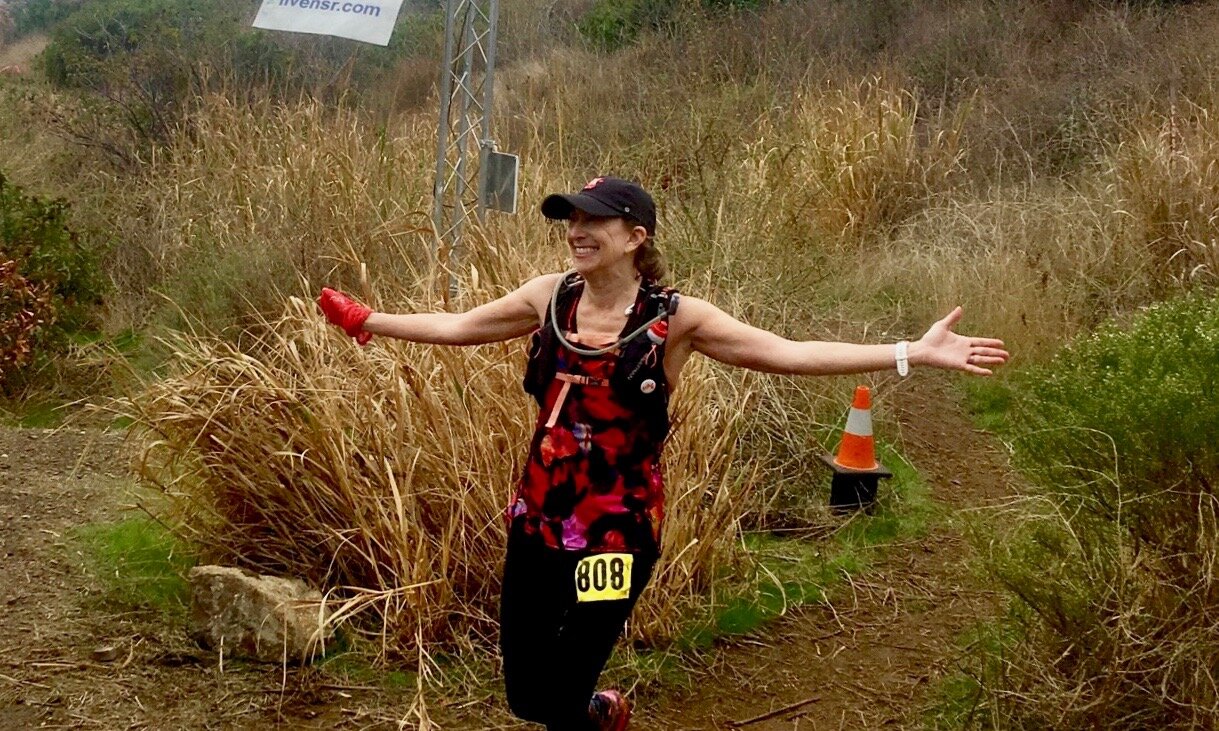With over 35 years of civil litigation, business, and dispute resolution experience, Rande Sotomayor takes a down-to-earth, common-sense approach to helping people solve problems and conflicts. Tenacious, intuitive, and with exceptional ability to perceive and manage the emotional component of any conflict, Rande’s approach delivers consistently excellent results.
With significant trial, arbitration, and appellate experience, Rande has helped parties resolve hundreds of disputes, with specialties in the following subjects: Real Estate, Personal injury, Insurance, Employment, Business, and Contracts.
Rande conducts MCLE programs on ADR, serves as a guest speaker for undergraduates and law students, and has taught and participated on panels for the U.S. District Court (C.D. Cal.) Mediator Panel, the Southern California Mediation Association, local bar and business associations, the Toronto Chapter of the Chartered Institute of Arbitrators, and other professional groups.
Rande has transitioned from litigation attorney to mediator to afford parties the opportunity to settle their legal disputes before spending precious resources on fighting it out in court. She has transformed from a desk-bound sedentary person to an athletic mountain hiker, then a mountain trail runner (including ultra-marathons), and then a mountain trail racer, beginning at age 56. With training and practice, Rande has evolved into an optimistic peacemaker who can’t help but constantly search for ways to manage inevitable conflict. She purports that we should not be surprised when conflict arises; we should be prepared to accept that it’s normal and learn how to manage it.
Rande has been fortunate to participate as a professional mediator, judge, trainer, and team coach at the International Chamber of Commerce (ICC) Commercial Mediation Competition in Paris from 2016 – present. Students from 66 law and business schools from around the world compete as advocates in commercial mediation proceedings. 130 professional mediators from around the world serve as mediators and judges in what is best described as a tournament. This year (2020),, she also served as a judge at the virtual Asia-Pacific Commercial Mediation Competition, run in a similar format. She has volunteered for these events because it is incredibly rewarding to see how the mediation of commercial disputes is becoming more widespread and a “normal” process in the minds of future leaders who will be responsible for managing conflict in more productive and less expensive ways than through litigation.
Rande’s current passion is urging the world to see “kindness” as a strong tool for overcoming conflict by improving the quality of our communication and uncovering opportunities to collaborate. Her article entitled “It’s All About Us – How to Win with Kindness” can be found on Medium.com at https://medium.com/@rande_87451/its-all-about-us-how-to-win-with-kindness-64efd0e7d71?source=friends_link&sk=dcd52d31df8135ff5fb05c9d1a12dac9.
Rande’s motto: “Replace judgment with curiosity.”
Website: www.sotomayorlaw.com
Email: rande@sotomayorlaw.com
I have been in practice for 37 years, and after 27 years of working in downtown LA, I decided to go out and start my own mediation practice.
I had no idea what it took to start a business. I set up my home office and sent out a letter to all the lawyers I had worked with for those 27 years, and you know what happened?
Nothing.
One of the things I did was send letters to various chambers of commerce, one of which was the San Gabriel Chamber of Commerce. Executive Director Sandy Rosko got me involved, and that’s how I started here.
It is. I’ve had a home office. I would travel for mediation to other attorney offices. Sometimes I would get space, but I needed regular space.
I found a great space near the courthouse at the 215 North Marengo building.
Yes, I trained in mediation in 1999, but I started working as a mediator through the LA Superior Court in 2004. I combined my litigation practice with mediation.
When I started using mediators as an advocate, I was drawn to it. It allowed me to practice law in a collaborative way. I always tried to work things out early with clients and their counsel.
I have found that many trial attorneys can’t turn off their trial attorney persona. Mediation is an opportunity to take a break from the war and put yourself into a resolution mentality.
I’ve found that in Southern California, mediation was used as a strategic tool, so they don’t let down their competitive “I want to win” mentality.
Usually, 95-98% of civil cases are settled before trial or dismissed because of motions. Most clients want an earlier and less expensive resolution. Most importantly, to keep the anxiety and diversion of litigation off their back so they can move on.
It gained a lot of popularity in the 90s. One of my mentors opened his practice in 1989, and I started using mediators in the 90s, first through the court program.
The court realized there was a way of lightening the load and serving the client’s interests by having an alternative dispute office. They started referring clients to that office for mediation.
There was also the advent of alternative dispute provider organizations, like JAMS and ADR Services. They are panels of mediators that do the administrative work.
I vividly remember one of my first private mediations and how effective and helpful it was. It gave parties a safe space to be open with each other.
I do not get involved in those kinds of cases because that is an area of law that is a specialty.
And the mediation of family law matters like divorce or child custody is conducted differently than commercial mediation.
However, within families, I have dealt with estate issues, conservatorships, and adult children in disputes with their parents over the disposition of real property.
I have even dealt with a civil cause of action in the midst of a family law dispute where the mother was not given visitation rights. We had to separate the family law issues from the money issue, but they were interrelated.
Working with people’s emotions is a vital component of any mediation.
For many years, I asked my parents, “Why would you spell my name that way?” They said, “We were going to name you Robin.”
But that’s not an answer. And after interrogating them, they said, “We thought it was more feminine.”
Go Figure. 100% of the time, when people see my name and don’t know who I am, they think I’m male.
My background is Jewish, and my grandparents were immigrants around the turn of the 20th century from the Lithuania/Latvia area.
They took boats that came directly to Baltimore, MD. Most Eastern Europeans came to Ellis Island in New York, but somehow, my family ended up in Baltimore.
My dad grew up working in his parent’s soda fountain shop. My mother’s family had a grocery shop.
My father was the first in his family to go to college after World War 2. He was a tail gunner in the Air Force. My mother studied opera at the Peabody Institute in Baltimore.
When I was a child, she would sing in churches and temples, and she was amazing.
My father went to the University of Maryland and then went on to Dental school.
He became a private dentist and was an innovator in his field. I remember meetings in our house with other dentists where they were developing practice management.
We were not. My father grew up in an orthodox household, and he really rejected it. One of the reasons is that they mistreated him in school.
The ethnic component was that there was a community in Baltimore. The interesting thing was when Jewish people started going to the private schools traditionally attended by WASPs, except in the state of Maryland, there were many Catholics.
So I was superficially a part of the community, but when my brother went to the private school, he was three and half years older than me; they would throw pennies at him because he was Jewish.
By the time he left, he had won the award for being helpful and compassionate, especially with the younger boys.
The school I went to (the same as my brother’s) wasn’t like that. I didn’t feel it the same way.
While we were Jewish, it wasn’t a big part of our life. Our life was really about working hard and studying well.
No, not at all.
Los Angeles has been a place for me where I felt completely at home.
I considered returning home to Baltimore, but I felt I would be in my brother’s shadow. I probably would have been. I call him the Saint. He is everybody’s trustee, and I just wanted to make my own way.
I didn’t want any preconceived notions of who I was.
The San Gabriel Valley, Pasadena, in particular, is unique. It is its own legal community, in a way. And a lot of people do know each other within this part of metropolitan Los Angeles.
I think, what does it take to keep someone at the table? I have to be on one person’s side when I’m in their room, and I have to be on the other person’s side when I’m in their room.
But I also have to be the bad guy when there are points of view that don’t make sense.
I’ll have to say to them, “You look at the dispute this way, but what will you do if the judge or the jury sees it differently?”
That usually triggers a thought and makes them think.
I have seen people use it as free discovery. The confidentiality of the process does not prevent somebody from leaving mediation, not having resolved the case, and continuing to try to find information discovered during the mediation.
But at the end of the day, you don’t have to disclose the smoking gun. I encourage most people to do that because that usually prompts a settlement.
Sometimes, you get someone who is being irrational and is trying to get information from the other side, and you just don’t give it to them.
It’s not possible to weed the people out in advance who are trying to misuse mediation.
The heart of the process is the trust of the mediator, and if you do not trust the mediator, you’re not going to have a good experience.
You need the trust, and if that’s not there, then you may as well not have come in the first place.
Listening. I challenge myself every day. As you can tell, I’m a big talker, and I really need to listen. One of the ways I practice listening is by repeating what someone has said to me.
It slows me down, and I make sure I understand.
I also write a lot. It’s one of the ways I remember things.
Usually, at the end of the process, clients thank me for understanding them.
Sometimes, I’ll have a party that you can tell is responsible for some damage the claimant is making. And one of the things I will discuss with them is how important their reputation is, and if somebody messed up, let’s make it right.
This is one of my favorite cases. It was a dispute between a brother and sister, late in life, over the inheritance from their mom.
She had been sick for 12 years, and the sister and her husband had taken care of her during that time because the brother lived out of state.
They came to an agreement and signed a written agreement about the inheritance that took into account that the sister had provided for their mother while she was ill.
Then, for some reason, there was no distribution after the mom had passed.
I think it went back to their childhood, where the sister never felt a part of the family. We resolved the disbursement of the inheritance pretty quickly, but I could see in these people a yearning. They were so sad.
I asked each of them if they wanted to talk to each other, and they did. Meanwhile, the spouses were advising them to stand up for themselves.
But the brother and sister were able to start talking on the phone without their spouses.
Then we met. Just the two of them and me. There were a lot of tears and hugs at the end. And a new beginning.
They sent me this beautiful thank you card, where the sister’s husband said, “Rande, Thank you for being fair, compassionate, and caring.”
The sister wrote, “Thank you for your amazing ability to bring closer to a long, 18 years conflict. I can enjoy the rest of my life without this burden in my life. May your gifts continue to set other people free.
To feel that I had some part in that is one of the most rewarding parts of my practice. It’s a very, very, very wonderful feeling and one of the reasons I evolved into being a mediator.
Yes, this has been a big part of my life for the last seven years. What I brought is a number of medals from races I’ve run.
I was never much of a natural person, and I was the least athletic person in the United States.
I hated sports. I hated watching them. I couldn’t run. Everything hurts. I’d trip over my feet on level ground.
It was so bad that I made a basket my senior year, and everyone stopped and applauded.
I live in the foothills of the San Gabriel Mountains in Altadena, and a neighbor set up a hike with all of our neighbors.
And it turns out there are these hiking trails right behind my house. I was opened up to a world that I never knew existed before.
Then I got involved in a hiking group that would hike the San Gabriel Mountains, and they were fast. You couldn’t stop to blow your nose, or you’d get left behind.
The same friend took me up the Mount Wilson trail, and it was tough. When we got down, someone said today was the first day of the free training of the Mount Wilson trail race.
I almost died coming down, and the docent said, “Well, you can hike it.” So I went home, grabbed my husband, and said, “We’re going to hike this.”
And that’s what we did.
Then, somehow, I started running. Mainly because we’d go on these really long hikes of 21 miles, and by the end, I just wanted to get out of there, so I started running.
So we started training for the Mount Wilson race, and after two months, I ran the Santa Anita Derby Day 5k, and I came in 7th in my age group!
And things just really took off from there. I’ve placed in the top 3 spots of my age division in many of the races I’ve entered.
One of the ones I’m so proud of is the 2017 Pasadena Trail Race Series Half Marathon. I’m so proud of this because there was this woman who ran most of the races I did, and she would always beat me, usually by 5 minutes.
I said I always lose to her, and my friend said, “Not today.” So the race starts, and we get to the top of Ken Burton’s Saddle, and there she is. I said to myself, “I’m going to learn something about myself today.”
So I watched her. Normally, when we’d get to the top of a hill, I would bomb down it, but she didn’t. So, I started following what she did. I reserved longer until we got to the last hill, and I just flew down the hill and didn’t stop. I just kept going because I was sure she was on my heels and pushed through to the finish line.
The best way to learn a little bit more about me is to visit my website: sotomayorlaw.com. They can also email rande@sotomayorlaw.com

My 1st recommended place in SGV
My 2nd place recommendation of SGV
My 3rd place recommendation of SGV



